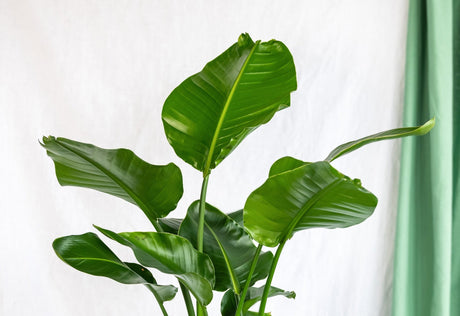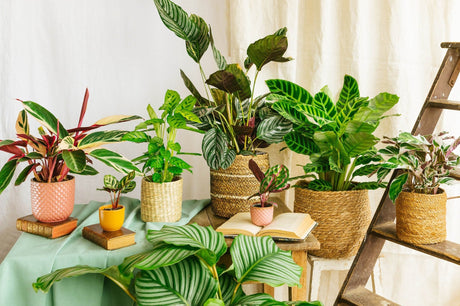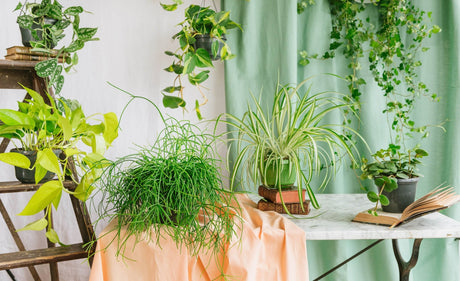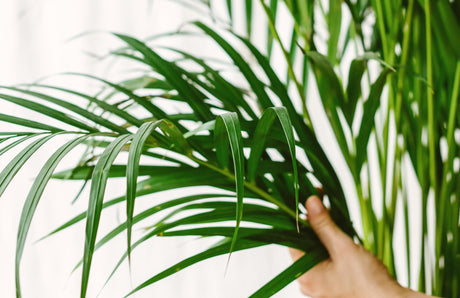Have you ever heard of fertilization but don't really know what it means? You know, however, that this practice helps your plants to grow well and be healthy. That said, fertilization is not always a must. You should not fertilize all your plants automatically. So how do you know if you should fertilize this or that plant? We tell you everything about fertilizing plants, when to practice it, and especially when and how to do it.
What is fertilizing a plant?
To put it simply, fertilizing a plant is more or less equivalent to feeding it, providing it with the mineral nutrients it needs to ensure good growth. This practice consists in helping the plant, if and only if this one is not able to find what it needs in the ground by itself. You have to keep in mind that a plant is supposed to be able to draw its resources from its environment without any help. Thus, the fertilization of plants is not to be practiced in all circumstances.
At first, we will adapt this practice above all according to the soil, whether it is rich or rather poor. Indeed, the natural resources found in the ground are sometimes limited for certain plants that are planted.It will also be necessary to adapt its practice according to the plant. Thus, if the latter is very greedy, like bamboo for example, it will be better to think about fertilizing it in order to ensure its good growth. To fertilize a plant, fertilizer is used. You can also opt for compost.
Why is this necessary?
Fertilizing an outdoor plant will be necessary when the soil in which it is planted is poor. This is often the case with new homes. In these cases, it is important to be able to provide the plants with a supplement so that they can feed properly. When the soil is poor therefore, it will be necessary to consider fertilizing your plants.
Pfor example, in so-called ''normal'' soil, which has been cultivated for a long time, the natural resources present may be limited, especially for certain plants which are more greedy . In the event that fertilization does not take place, the plant will not wither but will grow very slowly.
The practice of fertilization becomes really necessary in regions such as the south, for example, where the soil can be very sandy and stony. These lands are poor in resources for the plants that grow there, so fertilization is necessary in this type of case, in order to obtain lush vegetation.If you can, ideally, you should plant plants in your garden according to the soil you find there and therefore its possibilities in terms of resources to feed your plants.
Thus, if you have rather poor soils, you can favor plants such as heather or broom. This will make things easier for you in terms of year-round maintenance. However, if you want to have lush vegetation in poor soil, then you will have to opt for the fertilization of your plants so that they are nourished correctly.
As for yourindoor plants, in order to stimulate their growth all year round, it is also quite possible to fertilize. You can therefore fertilize your indoor plants during the period of their growth, for the most part between March and October. Keep in mind that it is important to only fertilize plants that are actively growing. In fact, it doesn't matter the season.
If a plant isn't showing signs of growth when you decide to fertilize it, it won't be able to absorb the minerals you offer it. These may accumulate in the soil and will then damage the roots. One should therefore not use fertilizer to force the growth of a plant, but rather practice fertilizing it when it has already shown signs of obvious growth.
How to fertilize a plant?
So how exactly does fertilization work? How to proceed ? First of all, there are a large number of commercial fertilizers. It exists in the form of granules or sticks. Some are long release and will feed the plant over the long term. Other fertilizers act in a single application. There are therefore many types of fertilizers that can all be used for all your plants: organic fertilizers, mineral fertilizers and mixed fertilizers.
In order to fertilize, you will therefore already have to decide on the type of fertilizer you want to use, in granular or liquid form, organic, mineral or mixed. It's up to you to see what suits you best in terms of application. Then find out about the right dose to give your plants. Indeed, an overdose could burn and damage them. Read the instructions carefully before starting to fertilize your plants.
When to fertilize your plants?
Most plants stay green year-round if properly cared for. This may suggest that their growth takes place all year round but this is not the case. In winter, the majority of plants enter a phase of vegetative rest and pause.
In order to take advantage of the best period, when they are in full growth, we therefore recommend that you fertilize your plants between March and October, depending on their variety. There are a few exceptions regarding the period to fertilize your plants, but assume that you fertilize a plant when it is growing and especially not when it is in distress or in bad shape, contrary to this you might think!






